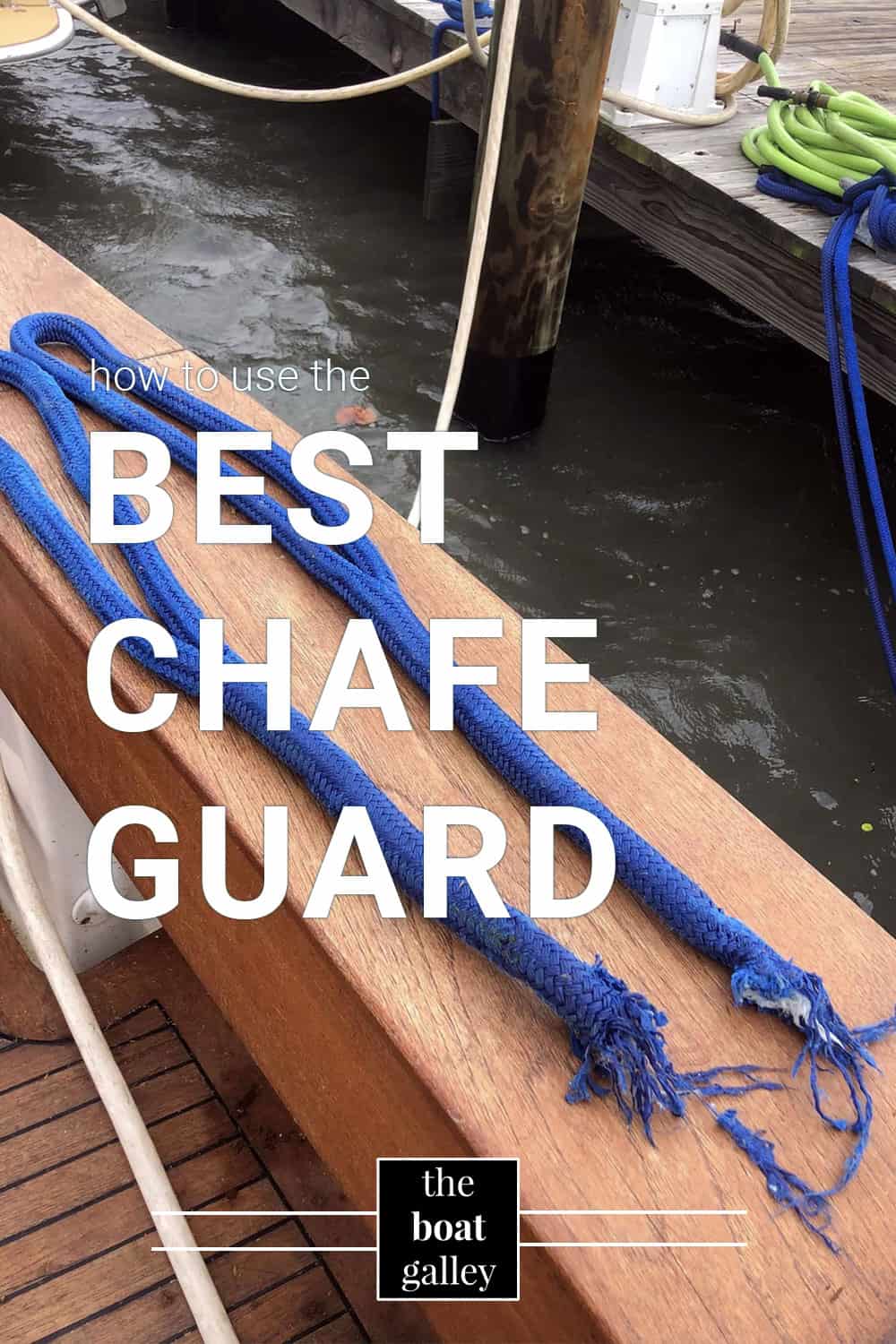As I’m sitting down to write this, we’re surrounded by squalls. Thunder is rumbling and yes, there was just a VERY loud crack of lightning.
I’d been planning to write about chafe gear with the start of hurricane season, and it’s every bit as much of an issue with squalls.
Your lines are what keep your boat in a safe place, whether it’s in a slip, on a mooring, or on anchor in the form of snubber lines. If they chafe through, they are of absolutely no use.
Anything and everything, it seems, can cause chafe: the edge of the boat or dock, a fairlead or hawsehole, a bobstay. Even the cleat the line is tied to!
You may have some stainless protectors on corners where lines pass, and yes, they’re called chafe guards. However they don’t protect the line against chafe, they protect whatever they’re screwed to.
Lots of things are sold as chafe guards to protect your lines. The best thing, however, is free: used fire hose. Fire departments have to periodically replace their hose and will give the old away. In some places you can get the hose directly from the fire department, other places the fire department will give the hose to the Coast Guard Auxiliary, Power Squadron or local marinas and you can get it from them.

Cut a piece of fire hose 12 to 18 inches long – maybe even longer in some applications. Open it up – usually it is a double thickness and you can separate the two pieces. Use an awl, ice pick, knife, or scissors to make a small hole about an inch from one end. Put a piece of 1/8” line through that hole – the line should be about 18” long (better to have it too long than too short).
Slide the fire hose over your line and then use the 1/8” line to tie the chafe gear to the boat or dock, NOT to the big line. The big line will stretch and contract with gusts of wind and if you tie the chafe gear to the big line, it may be out of place as the line stretches. If you tie it to the boat, the big line will slide through it and be protected.
We used fire hose as our chafe gear in Hurricane Irma (Cat 4) and while there was some abrasion on the outside of it, it did not wear through and the line inside was perfectly intact. Years ago, we used old water hose in the same way for chafe gear. That is no longer recommended as heat can build up and damage the line. Fire hose is better as it lets air and water inside and keeps the line cool.
It doesn’t take long to make your chafe gear and it’s good to use it all the time – you never know when a squall may hit, and it’s good to have it ready ahead of time if a tropical storm decides to head your way.
Here’s hoping for a mild season!

Carolyn Shearlock has lived aboard full-time for 17 years, splitting her time between a Tayana 37 monohull and a Gemini 105 catamaran. She’s cruised over 14,000 miles, from Pacific Mexico and Central America to Florida and the Bahamas, gaining firsthand experience with the joys and challenges of life on the water.
Through The Boat Galley, Carolyn has helped thousands of people explore, prepare for, and enjoy life afloat. She shares her expertise as an instructor at Cruisers University, in leading boating publications, and through her bestselling book, The Boat Galley Cookbook. She is passionate about helping others embark on their liveaboard journey—making life on the water simpler, safer, and more enjoyable.


Dave Skolnick (S/V Auspicious) says
Some fire hose is rubber lined. The rubber should be removed so water can get through and keep the line from overheating and melting.
In some jurisdictions, including mine in Annapolis MD, fire hose is destroyed at the end of its service life to avoid misuse. Get it where and when you can.